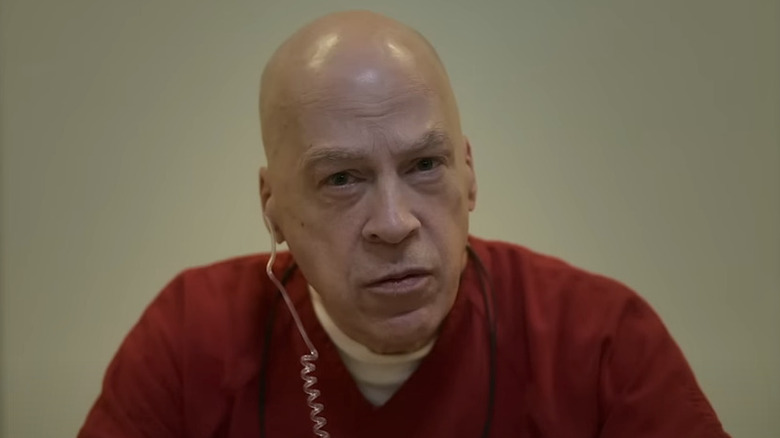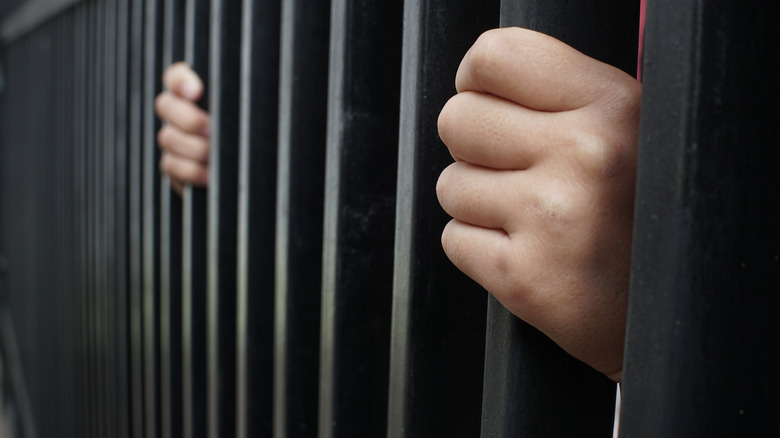I Am A Killer's David Cameron Keith Had A Chilling Motive For Killing Harry Shryock
The sixth episode in the third season of the Netflix true crime series "I Am a Killer" tells the story of David Cameron Keith, who in 1984 shot and killed pilot Harry Lee Shryock in Montana (via IMDb). Keith robbed a Montana drug store while on drugs, according to United Press International (UPI). He took a teenage boy as a hostage, and demanded in exchange for the youth, he be given a plane, a pilot, and a parachute. Shryock, retired from the military and working as a charter pilot, offered himself in exchange for the hostage.
The police disabled the plane, and a sniper fired at Keith, who was wounded. Keith then shot and killed Shryock. Once in custody, Keith gave the police one version of events leading up to Shryock's death, turning what began as a robbery and hostage situation into a murder case. Over time, though, Keith's account changed.
In 1985, Keith pleaded guilty to all charges, including aggravated assault and kidnapping as well as one charge of deliberate homicide related to Shryock's death. As a result, Keith was sentenced to die but that sentence was later commuted by then-Montana's governor in 1988 (per the University of Montana). Covering death row inmates such as Keith who've had their sentences overturned or commuted, a trailer for the Netflix series "I Am a Killer" is available to watch now on YouTube.
Keith fought efforts to stay his execution
As the UPI report goes on to note, Keith had an opportunity to avoid the death penalty for his crimes through a plea deal. In the deal, which a judge refused, he would plead guilty to kidnapping in exchange for a chance at parole. Against the advice of his counsel, Keith then pleaded guilty to all charges against him, leading to his time spent on death row. As of UPI's report, he otherwise fought all efforts to overturn his conviction or stay his execution. Journalist Dennis Jones was close to Keith at that time. Jones said (via UPI), "He has no intention of being saved from this ... He believes he killed a man and he needs to pay for it."
The reason that Keith at first gave for killing Shryock was that it was an involuntary reaction to himself being shot by a police sniper. According to Jones, who witnessed the incident, and Keith himself, who later walked back his motive, that version of events was soon cast in doubt. Jones said (via UPI), "He knew and I knew that wasn't true. Too much time had elapsed between the sniper fire and the fatal gunshot that killed Shryock for it to have truly been unintentional."
At the time he was shot by police, Keith expected to die
At the time that his 1985 hearing took place, Keith provided a written statement as to his true motive for killing Shryock (via Casetext). In it, Keith said (per Casetext) that after he was shot by the police sniper he thought he was dying, and he didn't want to go alone, "so I fired my pistol into the back of the head of Mr. Harry Shryock." By 1988, though, and despite the fact Keith at first failed to fight the conviction, Keith's death sentence was commuted by then-Montana governor Ted Schwindin, citing Keith's partial paralysis, blindness, and remorse as his reasons, among other factors, per the Death Penalty Information Center.
Also according to the Death Penalty Information Center, Governor Schwindin believed it could not be proven without a doubt that Shryock's shooting was premeditated and not in fact an involuntary reaction to Keith himself being shot. Today, Keith continues to atone for his crimes as an anti-drug advocate while serving a life sentence in prison at the Crossroads Correctional Center in Shelby, Montana (via The Cinemaholic).


